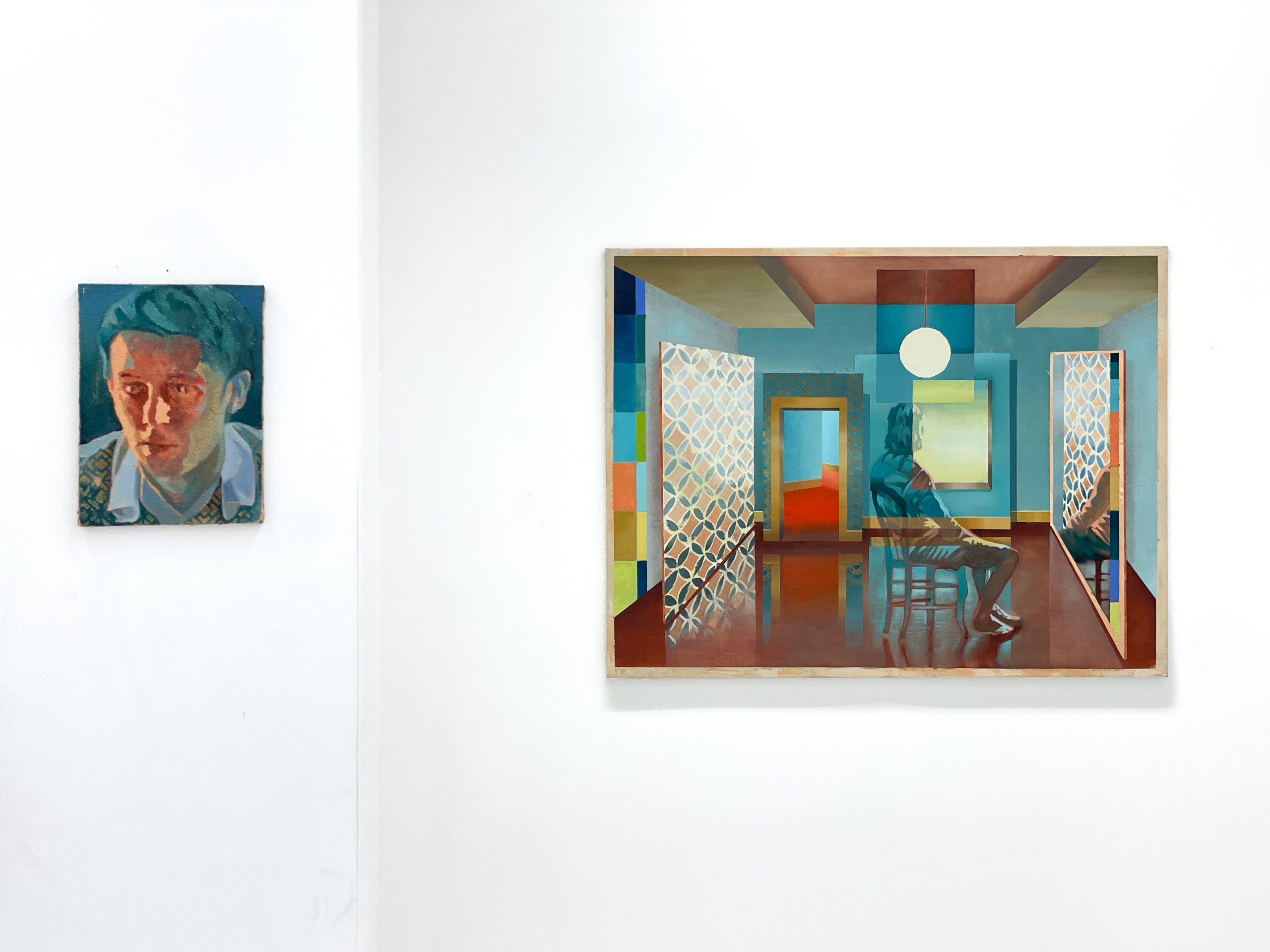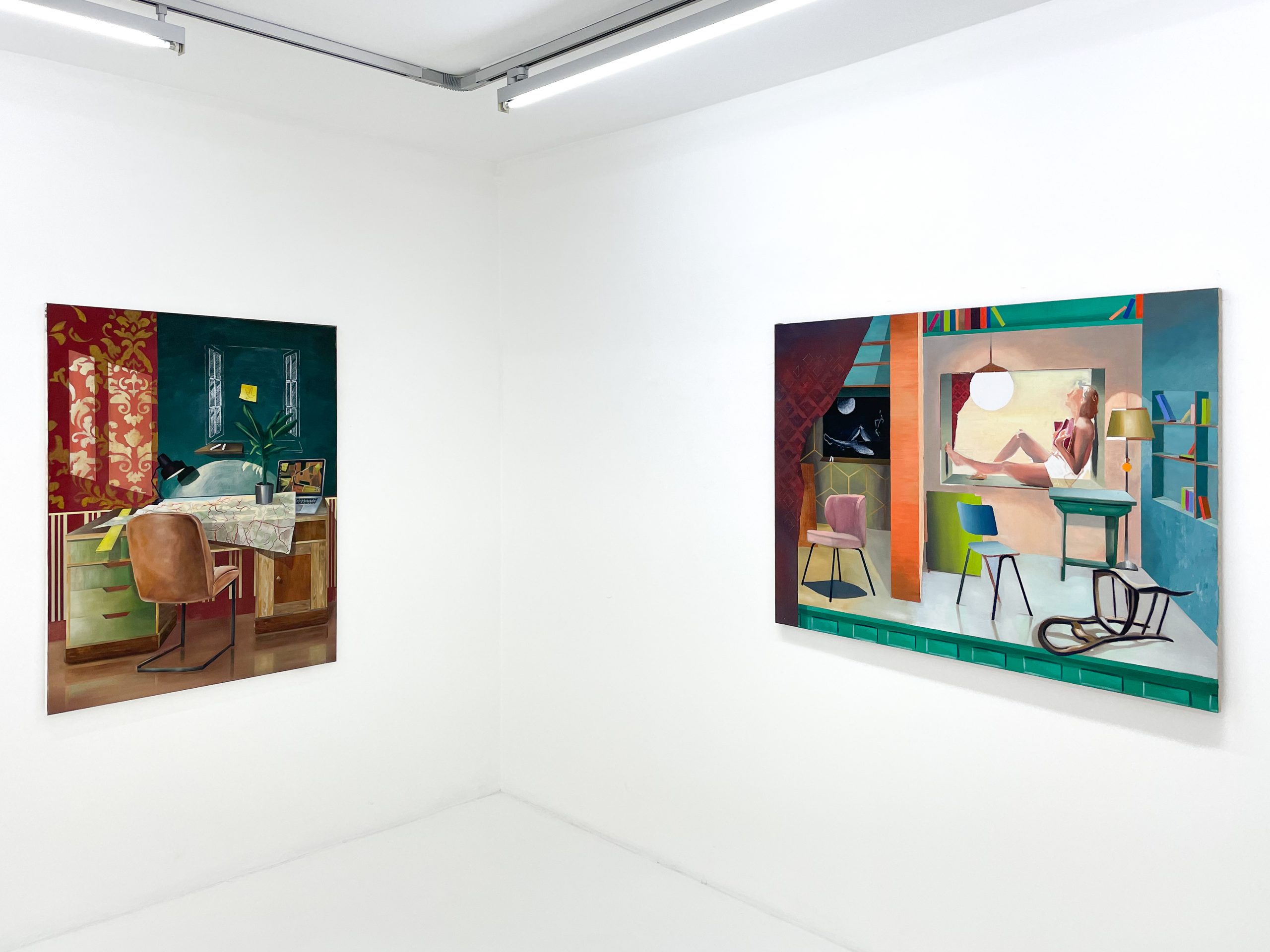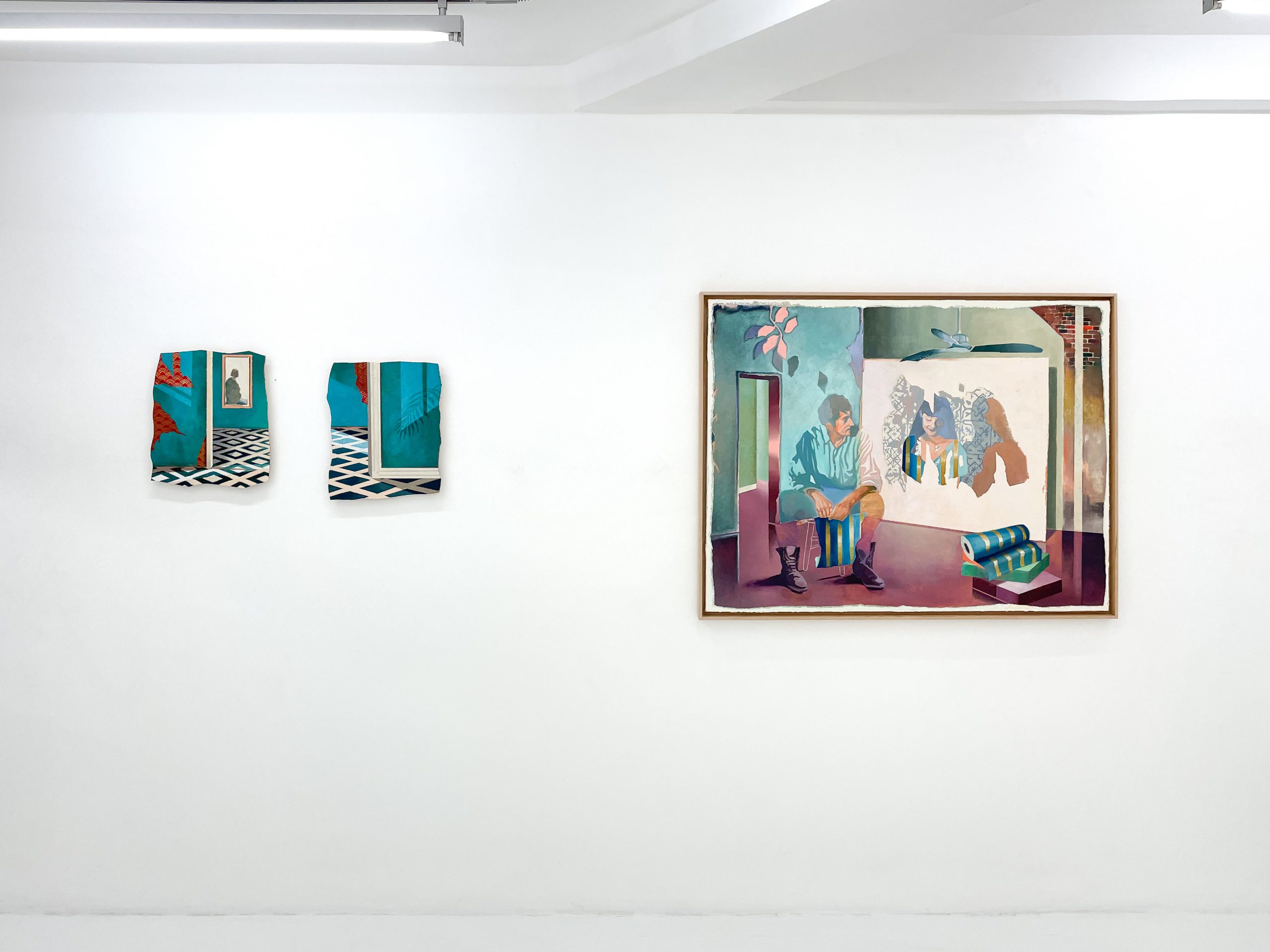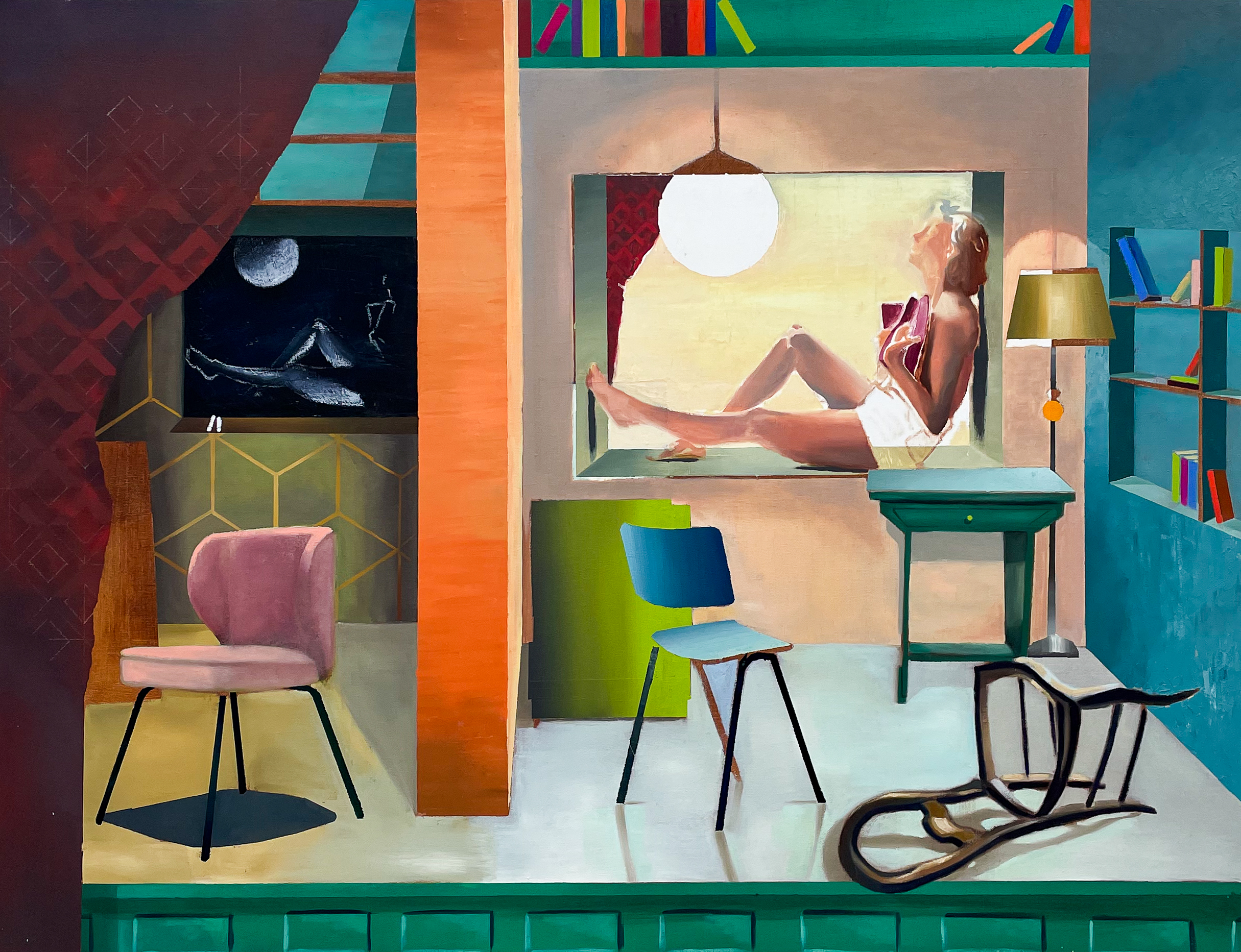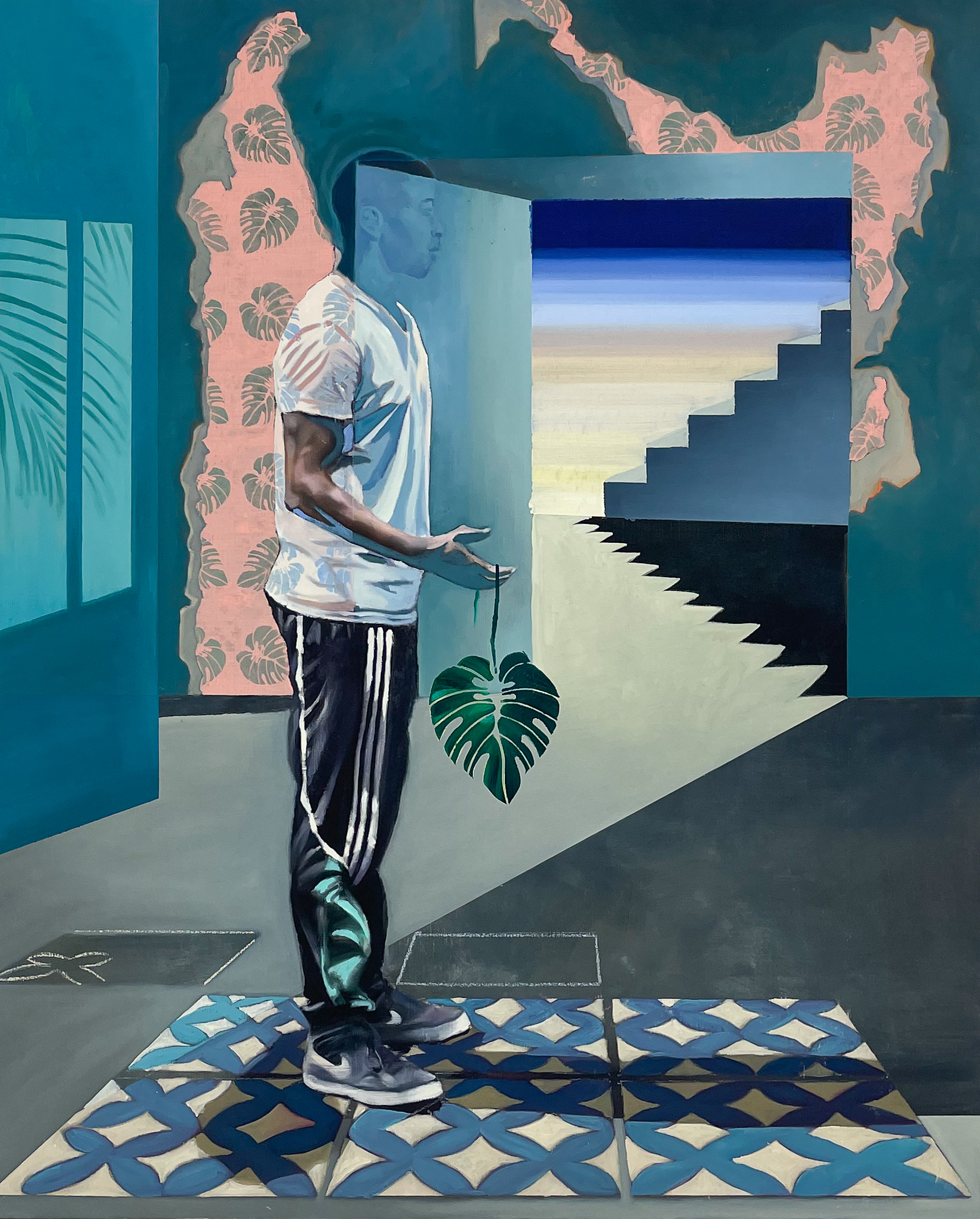«Thus, at the dawn of a world opening up to an “augmented reality”, bodies fade away and merge with the scenery. The map replaced the territory». Brice Blanqué
After a cinematographic career, Brice Blanqué chose to turn himself towards a different artistic practice by entering the Beaux-Arts of Paris, from which he graduated in 2021. His work presents itself as an open window on interiors from which an odd feeling radiates. An impression of muted violence emanates inside of an apparently calm environment. By playing on the duality between interior and exterior, he manages to create discordant spaces wherein the fragments of memory are juxtaposed. The relationships between private space and public space mingle and clash. He uses sparkles of images from the collective memory and from his more personal memories to create architectural ensembles that seem closed but actually offer the contingency of an elsewhere, the possibility to get out of the frame.
